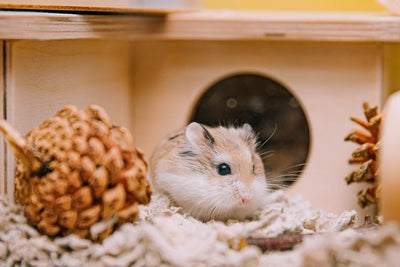Embark on a journey to discover the key components of a diet that will keep your veiled chameleon healthy and thriving. This guide will explore the best foods to offer, how to ensure proper hydration, and common dietary mistakes to avoid. By following the advice outlined here, you can provide your chameleon with a balanced and nutritious diet that supports its overall well-being. Whether you are a new chameleon owner or looking to enhance your current feeding practices, this guide is packed with valuable insights to help you make informed decisions when it comes to nourishing your scaly friend. Get ready to unlock the secrets to optimal chameleon nutrition and set your companion on the path to a long and healthy life!

Understanding the Veiled Chameleon Diet
Natural Diet in the Wild
In their natural habitat, veiled chameleons primarily feed on a variety of insects like crickets, grasshoppers, and mealworms. They may also consume plant matter such as leaves and flowers. This diverse diet provides them with essential nutrients and hydration, contributing to their overall health and well-being.
Key Nutritional Requirements
Veiled chameleons require a balance of nutrients to thrive in captivity. Their diet should include gut-loaded insects to ensure they receive essential vitamins and minerals. Calcium and vitamin supplements are also crucial to prevent deficiencies. It is essential to provide a varied diet to mimic their natural foraging behavior and prevent nutritional imbalances.
Importance of Hydration
Proper hydration is vital for veiled chameleons as they do not typically drink from standing water. Misting their enclosure multiple times a day helps simulate rainfall, allowing them to drink water droplets from leaves. Supplementing hydration through regular misting is essential for their well-being. Additionally, maintaining humidity levels in their environment aids in hydration and supports healthy shedding.
Dietary Considerations
Apart from insects, veiled chameleons can benefit from occasional supplementation of fruits like berries and melons. These treats provide additional hydration and some essential vitamins. However, it's crucial to offer these in moderation to prevent digestive issues and obesity. Green leafy vegetables can also be offered occasionally to provide fiber and additional nutrients.
Feeding Schedule
Establishing a consistent feeding schedule is essential for veiled chameleons. Feed adult chameleons every 2-3 days, offering a variety of gut-loaded insects. Juveniles require daily feedings to support their growth and development. Monitor their appetite and adjust feeding frequency accordingly.
Captive vs. Wild Diets
While veiled chameleons have adapted to consuming a wide range of insects in the wild, their captive diet may need supplementation to meet all nutritional needs. Captive diets often lack the diversity found in the wild, making it necessary to provide a well-rounded diet with appropriate supplements to ensure their health.
Behavioral Aspects of Feeding
Observing your chameleon's feeding behavior can provide valuable insights into their health. Changes in appetite, coloration, or activity levels may indicate underlying health issues or dietary deficiencies. Regularly monitor their eating habits and adjust their diet as needed to maintain their well-being.
Conclusion
Understanding the veiled chameleon diet is crucial for providing optimal care and ensuring their long-term health. By offering a diverse, nutrient-rich diet and maintaining proper hydration, you can support their unique dietary needs and promote their overall well-being. Regularly educate yourself on best practices and consult with a reptile veterinarian for specific dietary recommendations tailored to your chameleon's individual needs.
Recommended Diet for Veiled Chameleons
Veiled chameleons are unique reptiles that require a specific diet to thrive in captivity. Providing them with a well-rounded and balanced diet is crucial for their health and longevity. In this blog section, we will discuss the recommended diet for veiled chameleons.
Variety of Feeder Insects
Veiled chameleons are insectivores, which means their diet primarily consists of insects. It is important to offer a variety of feeder insects to ensure they receive a wide range of nutrients. Some suitable feeder insects include crickets, roaches, mealworms, and waxworms. Rotating the types of insects can prevent nutritional deficiencies and keep your chameleon interested in its food.
Gut-Loading and Dusting Insects
Gut-loading is the process of feeding nutritious foods to the insects before offering them to your chameleon. This enhances the nutritional value of the insects, which in turn benefits your chameleon. Dusting the feeder insects with a calcium supplement is also essential to prevent metabolic bone disease, a common health issue in chameleons.
Supplementation with Fruits and Vegetables
While insects form the majority of a veiled chameleon's diet, supplementation with fruits and vegetables is also important. Offer a variety of safe fruits and vegetables such as collard greens, mustard greens, dandelion greens, squash, and berries. These foods provide additional vitamins and minerals that may not be present in feeder insects alone.
Hydration and Water Intake
Veiled chameleons also require proper hydration. Ensure that your chameleon has access to clean water daily. Misting the enclosure to create humidity can also help chameleons drink water droplets off leaves. Dehydration can lead to serious health issues, so monitoring water intake is essential.
Avoiding Toxic Foods
It's crucial to be aware of foods that are toxic to chameleons. Avoid feeding your veiled chameleon foods like avocado, rhubarb, or any insecticides present on feeder insects. These substances can be harmful or even fatal to your pet.
By following these recommendations and providing a diverse diet, you can ensure that your veiled chameleon receives the necessary nutrients for optimal health. Remember to consult with a reptile veterinarian or specialist to tailor the diet to your chameleon's specific needs.
Keep your veiled chameleon healthy and happy by offering a well-planned and varied diet!.
Feeding Guidelines and Frequency
When it comes to feeding your chameleon, understanding the proper guidelines and frequency is crucial for their health and well-being. Here we discuss the feeding schedules for both adult and juvenile chameleons, along with the importance of monitoring their eating habits.
Feeding Schedule for Adult Chameleons:
Adult chameleons typically require feeding every other day. Offer a variety of gut-loaded insects such as crickets, roaches, and worms. Dust the insects with calcium and multivitamin supplements to ensure your chameleon receives all the necessary nutrients. It's also essential to provide a balanced diet that mimics their natural food sources in the wild, helping maintain their overall health.
Feeding Schedule for Juvenile Chameleons:
Juvenile chameleons have higher energy requirements and may need to be fed daily. Offer appropriately sized insects such as small crickets and fruit flies multiple times a day. Dust the insects with calcium powder at every feeding to support their growth and development. Additionally, consider incorporating gut-loaded insects to enhance the nutritional value of their diet and aid in their rapid growth phase.
Monitoring Eating Habits:
Keep a close eye on your chameleon's eating habits. A sudden decrease in appetite or refusal to eat could indicate a health issue. Ensure proper hydration by providing a water source and consider periodic visits to a reptile veterinarian for check-ups. Furthermore, observe their feeding behavior to detect any potential issues early on, such as difficulty capturing prey or signs of lethargy, which may require adjustments to their diet or environment.
Chameleons are fascinating creatures known for their unique ability to change color and their distinctive hunting style. These reptiles are primarily insectivores, relying on a diet of live insects for their nutritional needs. When setting up a feeding schedule for your chameleon, it's essential to consider their age, species, and individual preferences.
Factors such as temperature, humidity levels, and lighting in their enclosure can also impact their feeding habits. Chameleons are sensitive to environmental changes, so maintaining stable conditions is key to ensuring they remain healthy and active.
In addition to insects, some chameleons may benefit from occasional supplementation with fruits or vegetables. However, these should not replace their primary insect-based diet but can provide additional nutrients and hydration.
To enhance your chameleon's feeding experience, consider offering a variety of insect species to prevent dietary boredom and ensure a well-rounded nutritional intake. Experiment with different feeder insects like Dubia roaches, mealworms, and waxworms to provide dietary enrichment and mental stimulation for your pet.
Remember, each chameleon is unique, and their dietary requirements may vary. By observing their behavior and adjusting their feeding schedule accordingly, you can ensure they receive the proper nutrition to thrive in captivity.
A well-planned feeding regimen tailored to your chameleon's age and species, coupled with regular monitoring of their eating habits, is essential for promoting their overall health and longevity in captivity.
Common Dietary Mistakes to Avoid
-
Overfeeding or Underfeeding: Finding the right balance in feeding your pet reptile is crucial. Overfeeding can lead to obesity and health issues, while underfeeding can result in malnutrition and stunted growth. It is essential to understand the specific dietary requirements of your reptile species to provide them with adequate but not excessive food.
-
Incorrect Insects or Plants: Providing the wrong type of insects or plants can be detrimental to your reptile's health. Research and ensure that you are offering suitable prey insects or vegetation that align with your pet's natural diet. Different reptile species have varied preferences, and it's important to cater to their specific needs to promote their well-being.
-
Lack of Supplementation: While a balanced diet is crucial, some reptiles may require additional supplementation to fulfill their nutritional needs. Factors such as age, species, and health condition can influence the need for supplements. Consult a reptile veterinarian or specialist to determine if your pet requires any specific vitamins, minerals, or other supplements to maintain optimal health.
-
Inadequate Hydration: Water is essential for the proper physiological functioning of reptiles. Inadequate hydration can lead to dehydration, which can have severe consequences on your pet's health. Ensure that fresh, clean water is always available for your reptile, and consider misting or bathing for species that require higher humidity levels.
-
Ignoring Behavioral Cues: Pay attention to your reptile's behavior when it comes to feeding. Some reptiles may display signs of hunger or disinterest in food based on various factors. Understanding and responding to these cues can help you adjust their diet accordingly and prevent issues like overfeeding or underfeeding.
-
Lack of Variety in Diet: Offering a diverse diet is key to providing essential nutrients and preventing dietary deficiencies. Rotating between different prey items, vegetables, and fruits can help ensure that your reptile receives a wide range of nutrients necessary for their health and well-being.
-
Inappropriate Enclosure Conditions: The environment in which your reptile lives can also impact their dietary habits and overall health. Incorrect temperature, humidity levels, or lighting can affect their metabolism and digestion, leading to dietary issues. Ensure that your reptile's enclosure mimics their natural habitat as closely as possible to support their dietary needs.
-
Overreliance on Commercial Diets: While commercial reptile diets can be convenient, relying solely on them may not provide all the necessary nutrients for your pet. Supplementing commercial diets with fresh foods can help enhance their nutritional intake and offer a more balanced diet. Always read product labels and consult with a reptile expert to ensure that the commercial diets you choose are suitable for your reptile's specific dietary requirements.
By addressing these common dietary mistakes and paying close attention to your reptile's nutritional needs, you can contribute to their overall health, longevity, and well-being.
Conclusion
Understanding the dietary needs of veiled chameleons is crucial for their health and well-being. By providing a balanced diet consisting of insects, vegetables, and fruits, chameleon owners can ensure that their pets receive the necessary nutrients for optimal growth and development. Additionally, proper supplementation and hydration are key factors in maintaining the overall health of veiled chameleons. By following the guidelines outlined in this diet guide, chameleon owners can help their pets thrive and lead healthy lives.






